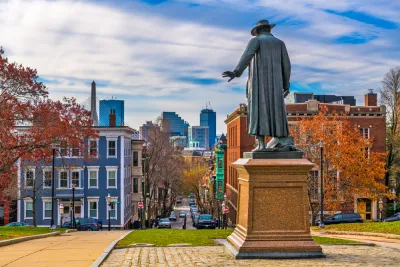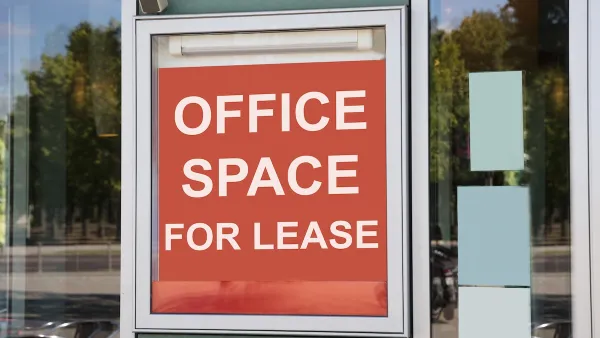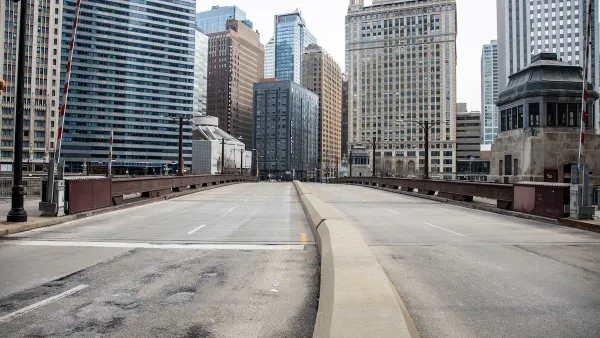A few key changes can help downtowns out of the ‘urban doom loop.’

How do we preserve crucial walkable urban places? Robert Steuteville seeks to answer this question in a piece for CNU Public Square, referencing a new report called Reiminaging Cities: Disrupting the Urban Doom Loop from Cushman & Wakefield with Christopher Leinberger and Places Platform.
The report outlines the importance of Walkable urban places (WalkUPs) as “efficient economic engines” that generate 57 percent of GDP while only taking up 3 percent of land in 15 major metro areas studied by the authors.
For decades, these urban centers focused on office buildings as the driving force. “Using portfolio theory to rebalance real estate toward less office space (work), more play (culture, entertainment, retail), and more residential (especially for-sale housing) would shift these urban centers back to the positive economic track they were on prior to COVID, the report concludes.”
Key recommendations include reducing the amount of office space and increasing residential units via conversion and new construction, increasing the diversity of businesses and services, and adding more amenities geared toward entertainment and recreation.
The report calls our current ‘doom loop’ an ‘episodic’ one that can be rectified through zoning and regulatory reform and a shift to accommodating more diverse uses and schedules.
FULL STORY: How to reverse the ‘urban doom loop’

National Parks Layoffs Will Cause Communities to Lose Billions
Thousands of essential park workers were laid off this week, just before the busy spring break season.

Retro-silient?: America’s First “Eco-burb,” The Woodlands Turns 50
A master-planned community north of Houston offers lessons on green infrastructure and resilient design, but falls short of its founder’s lofty affordability and walkability goals.

Delivering for America Plan Will Downgrade Mail Service in at Least 49.5 Percent of Zip Codes
Republican and Democrat lawmakers criticize the plan for its disproportionate negative impact on rural communities.

Test News Post 1
This is a summary

Test News Headline 46
Test for the image on the front page.

Balancing Bombs and Butterflies: How the National Guard Protects a Rare Species
The National Guard at Fort Indiantown Gap uses GIS technology and land management strategies to balance military training with conservation efforts, ensuring the survival of the rare eastern regal fritillary butterfly.
Urban Design for Planners 1: Software Tools
This six-course series explores essential urban design concepts using open source software and equips planners with the tools they need to participate fully in the urban design process.
Planning for Universal Design
Learn the tools for implementing Universal Design in planning regulations.
EMC Planning Group, Inc.
Planetizen
Planetizen
Mpact (formerly Rail~Volution)
Great Falls Development Authority, Inc.
HUDs Office of Policy Development and Research
NYU Wagner Graduate School of Public Service





























